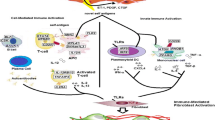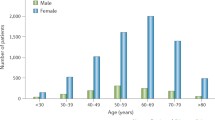Abstract
A hallmark of scleroderma is clinical heterogeneity and this is a major challenge both in clinical management and also for translational studies and exploration of pathogenesis as discussed in other sections of this volume. It is critical that the disease is correctly diagnosed and that cases are appropriately classified. There must be agreement between scientists and clinicians to ensure that similar cases are grouped in collaborative or multicentre research studies and clinical trials.
This section of the book will address some of the current concepts that surround classification and diagnosis of scleroderma. It will also review the recent exploration of genetic aspects of the disease that are likely to be central to aetiopathogenesis.
You have full access to this open access chapter, Download chapter PDF
Similar content being viewed by others
Keywords
- Classification
- Clinical heterogeneity
- Environmental triggering
- Epidemiology
- Genetic aspects
- Genetics
- Overview
A hallmark of scleroderma is clinical heterogeneity and this is a major challenge both in clinical management and also for translational studies and exploration of pathogenesis as discussed in other sections of this volume. It is critical that the disease is correctly diagnosed and that cases are appropriately classified. There must be agreement between scientists and clinicians to ensure that similar cases are grouped in collaborative or multicentre research studies and clinical trials.
This section of the book will address some of the current concepts that surround classification and diagnosis of scleroderma. It will also review the recent exploration of genetic aspects of the disease that are likely to be central to aetiopathogenesis. The concept of an environmental triggering event or multiple triggers occurring synchronously ort over time is an attractive one in an uncommon and heterogeneous disease. Only through careful epidemiological and genetic studies can these aspects of the disease be unravelled.
At a more practical level it is important to take account of the clear clinical differences that have been established for the major groups or subsets of scleroderma patients. It is clear that there are common clinical features but also distinct differences between the limited and diffuse subsets of scleroderma and it is intriguing that these differences translate into distinct but overlap** patterns of disease. In addition the frequency of major organ based disease often differs between the scleroderma subsets. This needs to be taken account of in clinical practice and research. There are inherent differences between criteria used for diagnosis and classification of scleroderma and several initiatives are underway to try and modernise or improve the systems that are in current clinical use. Finally, just as there has been progress in understanding the complex genetic basis of scleroderma susceptibility it is likely that in the future there will be a focus on the genetic aspects that underpin clinical subtypes. An exciting area of recent research is the use of gene expression signatures to identify subtypes of scleroderma and these subtypes may allow further delineation of subgroups of patients in a robust and meaningful way. The interplay between antibody, genetic and gene expression based subsets is likely to be clarified as these studies are extended. All of this work will depend upon clear systems of classification, diagnosis and assessment. The first part of this section will review current knowledge about genetic and environmental factors that may contribute to the development of pattern of scleroderma. There will then be consideration of current and future approaches to classification that are likely to underpin progress in better understanding the diversity and cause of this disease.
Author information
Authors and Affiliations
Corresponding author
Editor information
Editors and Affiliations
Rights and permissions
Copyright information
© 2012 Springer Science+Business Media, LLC
About this chapter
Cite this chapter
Denton, C.P. (2012). Overview: Epidemiology, Genetics and Classification. In: Varga, J., Denton, C., Wigley, F. (eds) Scleroderma. Springer, Boston, MA. https://doi.org/10.1007/978-1-4419-5774-0_3
Download citation
DOI: https://doi.org/10.1007/978-1-4419-5774-0_3
Published:
Publisher Name: Springer, Boston, MA
Print ISBN: 978-1-4419-5773-3
Online ISBN: 978-1-4419-5774-0
eBook Packages: MedicineMedicine (R0)




